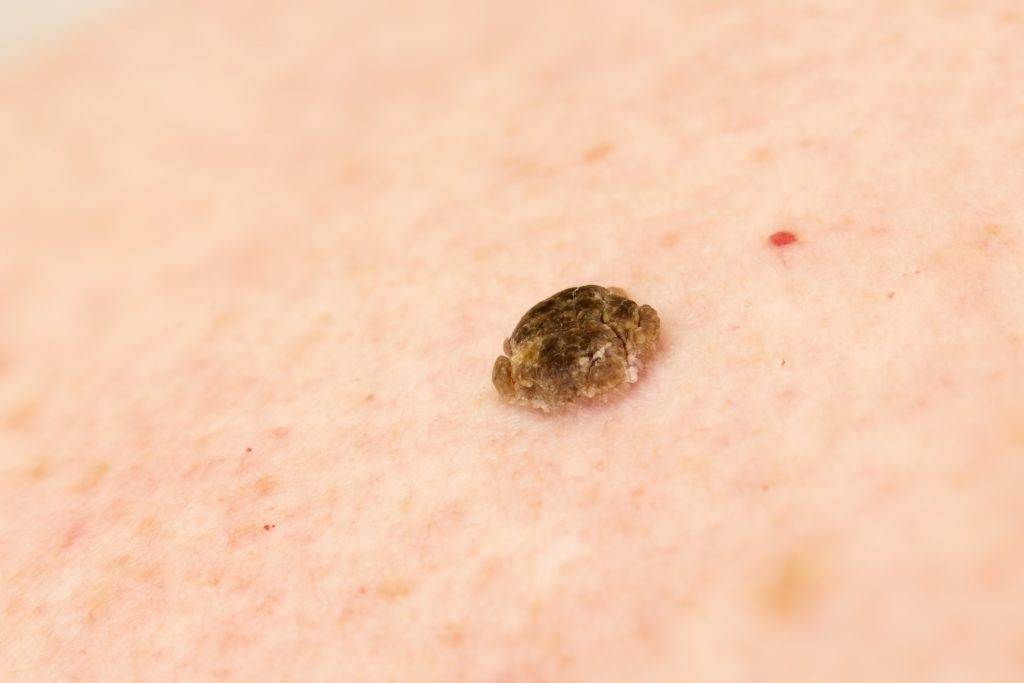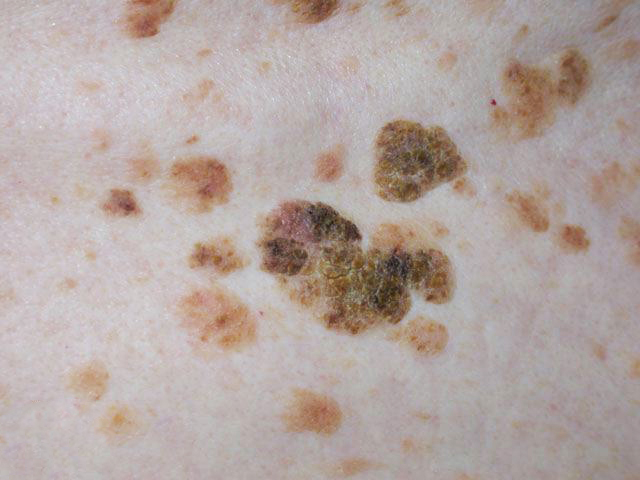Seborrheic Keratosis Treatments from U.S. Dermatology Partners
What Is Seborrheic Keratosis?
Seborrheic keratosis is one of the most common noncancerous skin growths found in older adults. It most commonly appears as a brown, black or light tan growth on the face, chest, shoulders or back. Although they are not cancerous, they can look like skin cancer.

Seborrheic keratosis is also known as seborrheic verruca or a senile wart.
Find This Service Near You
Who Is at Risk for Secorrheic Keratosis?
People over the age of 50 are most likely to develop seborrheic keratosis, although its exact cause is not yet known. People with a family history of this condition also are more likely to develop it.
Seborrheic Keratosis Symptoms

Seborrhoeic keratoses have a dark, scaly appearance on the skin. (Source)
Seborrheic keratosis can occur as a single growth, or it may appear in a small cluster. It will be flat or slightly elevated and have a scaly surface, and it may itch. The color can vary from light tan to brown or even black, and it is round or oval shaped.
Related: What’s the Difference Between Actinic Keratosis and Seborrheic Keratosis?
Seborrheic Keratosis Treatments

- Cryosurgery, which involves freezing it with liquid nitrogen
- Curettage, or using a special instrument to scrape it from the skin’s surface
- Electrocautery, or burning it with an electric current to remove it
- Vaporizing it with laser ablation
Seborrheic Keratosis Prevention
At this time, there is no sure prevention or cure for it, but with help from a dermatologist, you can reduce the symptoms — and the effect this condition has on your life.
*Results may vary by individual
